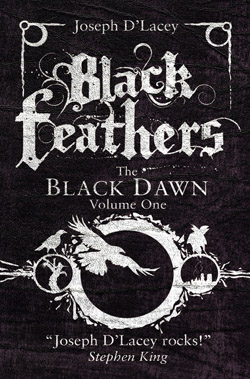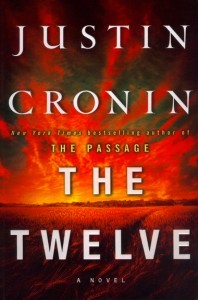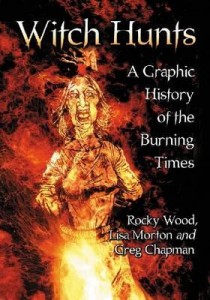 Fragments of a Broken Land: Valarl Undead
Fragments of a Broken Land: Valarl Undead
By Robert Hood
Publisher: Borgo Press/Wildside Press
Paperback: 432 pages
ISBN: 978-1-4344-4589-6
Blurb: In a place where no stars appear in the night sky, a group of strangers whose ancestries reach back to an earlier apocalyptic disaster are brought together to track down a resurrected corpse that might hold the key to the End of the World. Described by science fiction legend Jack Dann as “one of the strangest and most interesting visions to come out of the modern horror/fantasy genres,” acclaimed author Robert Hood’s Fragments of a Broken Land: Valarl Undead is an epic tale of greed, dying magic, strange monsters, and a motley group of heroes, with a strange and breathless climax you won’t easily forget.
When I think of Fantasy as a genre, I don’t often get the modern Epic Fantasy image of Dwarves and Orcs and Elves questing through majestic forests in my mind. I’ve always been more drawn to the works of Clark Ashton Smith, Fritz Leiber, William Hope Hodgson, Robert E Howard, Jack Vance, M. John Harrison and Michael Moorcock. Their fantasies were always so much more ‘otherworldly’ than the faux-Europes and other earth-analogues of modern Epic Fantasy. Their worlds were far-distant not only in ‘place’ from our own, but often also far-distant in ‘time’. Long past or far, far in the future, they were as foreign and exotic to the reader as if they really had just stepped into another country and culture.
Fragments of a Broken Land: Valarl Undead, the debut adult-novel¹ from Robert Hood, has this Otherworldliness in spades. The ‘world’ of Tharenweyr is as strange and exotic a place as has ever existed in fantasy fiction. Indeed, it is not even a world but a solid firmament (or a ‘seed-like emanation’ as Hood puts it on his website) that exists separate from space and time as we know it. It has no sun or moon or stars. Not even the infinite void of space to stare into. Instead, Tharenweyr is locked within its firmament, a mysterious wave of energy that washes from the ‘Worldly Gods’ of the north to the ‘Dark Gods’ of the south and creating the semblance night and day.
The novel begins with Remis, a young and newly graduated spellbinder interested in starting her own magical artifacts business, who is being pressured (threatened, intimidated) into working for a powerful Merchant House. She’s also having horrible nightmares in which she finds herself trapped inside the body of a hideous corpse-like being. And then there’s Tashnark, the bastard son of a commercial slaver. He’s having dreams that he is the powerful warrior Bellaroth, questing across some strange otherworld that exists on the shoulders of a vast cosmic monster.
It is the chance meeting of Remis and Tashnark – their respective dreams unknown to each other – that sets the course of lifting Fragments of a Broken Land.. out of individual nightmares and into a fantasy who’s cosmic scope rivals anything by Lovecraft or William Hope Hodgson. Gods battling Gods. Ancient artifacts and the prophesised return of catalysmic events that will wipe Tharenweyr out of existence. And, as always, Gods using normal people as their pawns.
In the hands of Robert Hood Fragments of a Broken Land… becomes so much more than just a Fantasy or Sword & Sorcery adventure though. The philosophical and spiritual underpinnings Hood has evoked for the world and its people almost demand a denser tale. In this sense, Hood certainly delivers. At times Fragments of a Broken Land… can be a hard read. You need to concentrate a bit. Divest some of your attention in the book. But believe me, the effort is worth it; Fragments of a Broken Land… will have your brain spinning in Gnostically-induced circles.
One thing that really did stand out for me is Tharenweyr’s main city of Ko’erpel-Na. The characters of Fragments of a Broken Land… all have a wonderful depth — their sense of humour, of justice, the way they try and interpret their world and the way they react to it — but the city is just as much a character too. It reminded me of Fritz Leiber’s Lankhmar or M. John Harrison’s Viriconium. It’s dirty, it’s crowded and full of disease and poverty, but there is also a feel to Ko’erpel-Na that speaks of age and so many lives lived within its walls. The impression I got of the city and its people was quite vivid, quite ‘real’. It seems a place just begging for a million more tales to be told.
Overall, Fragments of a Broken Land: Valarl Undead is a brilliant fantasy novel of the type we seldom get to read these days. Dense and exotic and full of ideas. It’s also full of sword & sorcery action too, and the type of cosmic horror that leaves you paranoid about your own reality. Really, what more could you ask for in a book?
Don’t believe me? Want to check it out for yourself? Mr Hood has three other Tharenweyr ‘Fragment’ stories to read for free on his website [http://fragmentsnovel.undeadbackbrain.com/]. Definitely worth checking out as a teaser and to get a feel for the world before tackling the very worthy Fragments of a Broken Land: Valarl Undead.
Oh, and the cover by Bob Eggleton? It is brilliant!
Footnote:
1. Robert Hood is the author of 5 previous Young Adult Novels, 15 Children’s books, published 3 collections of his own work, and edited a further 5 anthologies.


 Witch Hunts – A Graphic History of the Burning Times
Witch Hunts – A Graphic History of the Burning Times